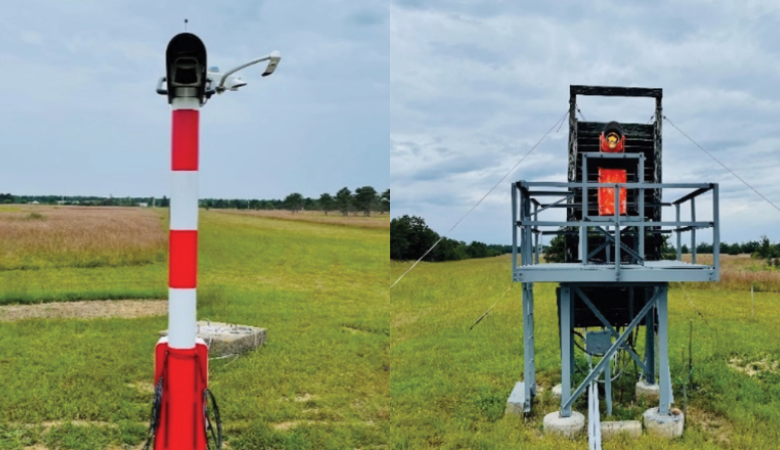Evaluating the Performance of Runway Visual Range Sensors for FAA

At the 30 busiest commercial airports in the U.S., there were about 11.7 million arrivals or departures or approximately 5.9 million flights in fiscal year 2022, according to FAA’s annual publication: Air Traffic by the Numbers. Every one of these flights was enabled by the accurate and consistent reporting of runway visual range (RVR) information.
RVR is a measurement of the distance a pilot can expect to see when operating on or near a runway in the National Airspace System (NAS). RVR measuring equipment, located next to runway, provides airport traffic control (ATC) with visibility measurements at key points along a runway (e.g., touchdown location, runway midpoint, and rollout location)―providing visibility information that is critical to safe operation of the NAS. This information is key to determining which aircraft can operate safely when weather conditions reduce the ability of pilots to see their surroundings.
Transmissometers were the standard visibility measurement instrument in the NAS for decades. Beginning in the 1980s, new forward-scatter meter technology was developed and validated. Transmissometers have some disadvantages compared to forward-scatter meters―they are larger, typically more expensive to acquire, and more expensive to maintain in good working order. As a result, forward-scatter meters began to replace transmissometers for operational use in the NAS. However, because a transmissometer provides visibility measurements using a principle that is more similar to human vision, transmissometers are still the preferred "gold standard" against which other instruments are tested.
For decades, the U.S. DOT Volpe Center has supported FAA in evaluating new RVR sensors (especially forward-scatter meters) by operating and maintaining 1970s-era analog transmissometers, which have been established as the gold standard for measuring and testing new visibility sensors.
As these transmissometers are complex opto-electro-mechanical systems that have not been manufactured or supported by the manufacturer for many years, FAA and the U.S. DOT Volpe Center determined that the best way to maintain the continuity of FAA's visibility standard was to evaluate the market and select at least one transmissometer for validation against the existing standard. After conducting market research, the U.S. DOT Volpe Center recommended a transmissometer for acquisition and testing, which the FAA approved. Between September 2021 and October 2022, the U.S. DOT Volpe Center operated the test transmissometer in a side-by-side installation with the existing gold standard transmissometer to evaluate whether the test transmissometer would work as a new standard.
The results of the test were transmitted to the FAA in July 2023, recommending that FAA accept the tested transmissometer as an acceptable standard. A final report will be published in 2024. This project provides the FAA with the ability to continue independent testing and validation of the fundamental performance of new visibility sensors for years to come. Accurate RVR information is critical to the safe operation of the NAS and is a key part of maintaining the United States’ world-leading aviation safety record. Data collection for this project was conducted at the U.S. DOT Volpe Center’s Volpe Test Range (formerly known as the Aviation Weather Research Facility), located on Joint Base Cape Cod in Sandwich, MA.
About the U.S. DOT Volpe Center
Celebrating more than 50 years of federal service to the nation, the U.S. DOT Volpe Center’s mission is to transform transportation for all.
We're Hiring: Learn more about our open job opportunities, our commitment to equity, and what it’s like to work at the U.S. DOT Volpe Center.
